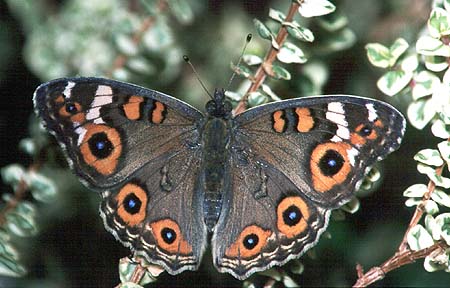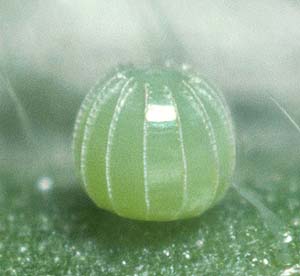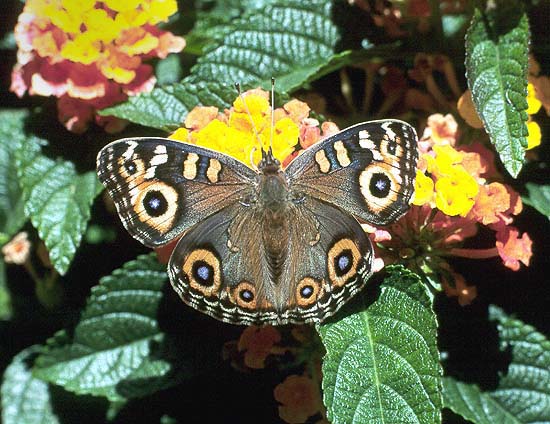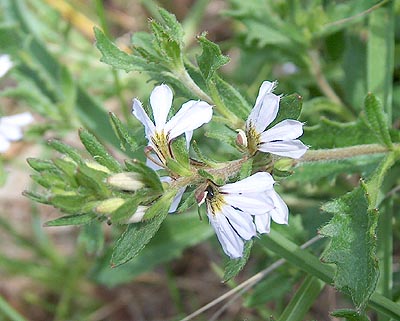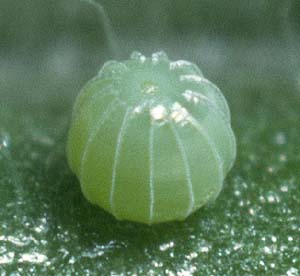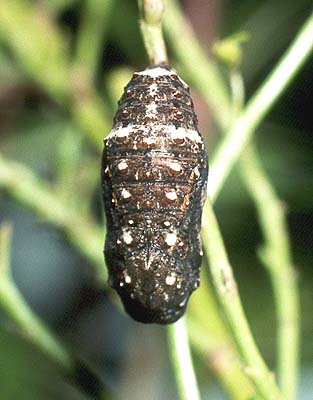-
Larval Food Host
-
Numerous native and introduced herbaceous plants including *Ruellia sp (Acanthaceae);
*Arctotheca calendula, Epaltes australis (spreading nut-heads) (Asteraceae);
Evolvulus alsinoides (native convolvulus) (Convolvulaceae);
*Centaurium erythraea (common centaury),
*C. spicatum (spike centaury) (Gentianaceae);
Goodenia spp, incl. G. geniculata,
G. pinnatifida (Cut-leaf Goodenia),
Scaevola aemula (fairy fanflower) (Goodeniaceae);
Plantago spp (plantains) incl. *P. lanceolata (ribgrass or ribwort),
*P. major (greater plantain) (Plantaginaceae);
Portulaca oleracea (munyeroo, purslane or pigweed) (Portulacaceae);
*Antirrhinum majus (garden snapdragon),
*Kickxia elatine (toadflax),
*Russelia equisetiformis (coral plant),
Stemodia florulenta (bluerod),
Veronica spp (speedwell) (Scrophulariaceae);
*Lantana camara, *Phyla canescens (lippia);
*Verbena spp incl. *V. bonariensis (purple-top verbena),
*V. officinalis (common verbena) (Verbenaceae);
*Scabiosa atropurpurea (scabious) (Dipsacaceae).
The larvae usually eat the leaves and softer green parts of the hostplant, which are
mostly perennial. The suitability of the various plants as larval hostplants is variable,
with the larvae developing better on some hostplants than others. Its preferred host
around Adelaide is the introduced weed Plantago lanceolata.
-
Eggs
-
Initially pale green, later turning greyish yellow, small, barrel shaped,
the height about the same as the width, with 13-16 well developed, wing-like
transparent longitudinal ribs that enlarge apically and continue onto the top
edge of the egg. There are also numerous indistinct lateral ridges. Usually
laid singly on the hostplant. Larval development within the egg commences
immediately after being laid and hatches in about 12 days during spring.
The egg shell is eaten by the larva after its emergence.
-
Larvae
-
Initially greyish yellow, long cylindrical shaped, with long dark fine hairs set
on raised simple bases. Head black, smooth, shining, with some hairs. After eating
the leaves of the hostplant, the larva gradually turns brown.
Subsequent minor instars are black and the hairs develop into pointed, branched fleshy
spines (scoli), which become progressively larger and better developed with each instar.
The final instar is about 32 mm long, cylindrical, covered in regular arrays of large
scoli on each segment, typical for the subfamily. The number of scoli on each segment
is variable, to a maximum number of 13. Scoli occur singly on the dorsal areas, but
sublaterally they occur in triplicates. (The latter can be used to quickly differentiate
these larvae from the larvae of the Vanessa butterflies). There are numerous
secondary setae, consisting of a fine pale coloured pointed hair set on a simple raised
pale coloured base. The final posterior segment is rounded. The head is black, but
coloured orange immediately behind the head, rounded, flattened at the front, deeply
furrowed dorsally, smooth, but covered in spinose setae set on a simple short base,
and with a pair of dorsal, short scoli-like horns. The colour is dark grey or black,
brownish laterally, sometimes with a darker dorsal line edged with white lunule shaped
spots, a subdorsal row of white lunule spots, and a white lateral line. The markings
tend to become inconspicuous on the anterior segments. The scoli are pale yellow
coloured laterally and sublaterally, while the remaining scoli are black and sometimes
basally bluish.
If the hostplant is densely leaved then the larvae remain exposed on the hostplant to
feed. Otherwise they will shelter during the day, either beneath the broad leaves
(as with Ribwort), or in debris around the base. On the larger hostplants like Verbena,
many larvae may occur together. The larvae do not make webbed shelters, such as are
found with the larvae of the Vanessa
butterflies. The larval duration is about 5-6 weeks during spring in temperate areas.
-
Pupae
-
Elongate, rounded, with a roughened surface, about 15 mm long ending in a short
posterior cremaster. Head slightly wedge shaped anteriorly and slightly divided,
an obscure keeled thoracic dorsal ridge, very short dorsal, subdorsal and lateral
abdominal projections, with the subdorsal projections being the best developed.
The colour of the pupae is mostly shades of greyish brown, sometimes reddish,
usually with two dorsal transverse white bands on the abdomen and some additional
white or brownish white dorsal marks abdominally, the projections are tipped white,
and the wing areas beneath are mostly brownish white with large dark coloured blotches.
Suspended head downwards by the cremaster. Pupation occurs either on the hostplant or
on an adjacent object or plant. The pupal duration can vary from 11 days to 4 weeks,
being longer during the cooler months.
-
Flight Period in South Australia
-
It is possible to find flying butterflies throughout the year, particularly in
the Far North of the state. Although no studies have been undertaken, it is
probable this butterfly is nomadic as well as migratory, populating inland areas
after rains, then moving on to new areas as the host and nectaring plants dry off.
In southern areas they are most common during the spring and autumn. Adults will
sometimes hibernate during winter in southern areas, but some adults will emerge
in winter and these have darker wing
undersides than the summer broods.
In southern temperate areas, small numbers are produced throughout the warmer months,
even though the common hostplants are rarely seen to carry early stages. They are
capable of completing a brood in about 10 weeks in these areas, although this period
is much shorter in the hotter northern pastoral region.

-
Distribution
-
Occurs throughout Australia, including Kangaroo Island and Tasmania. It also occurs
in adjacent tropical Papua New Guinea, Indonesia and the southwest Pacific islands.
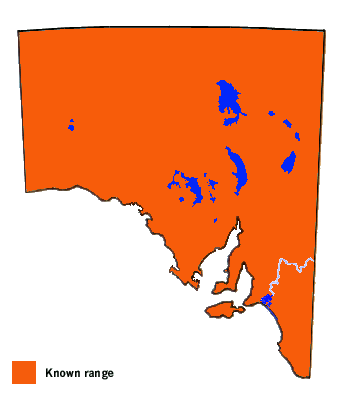
-
Habitat
-
Found wherever its hostplants occur, and these are common and widespread
occurring in most habitats.
-
Conservation Status in South Australia
-
A migrant, locally common in breeding areas and during migrations.
-
Threats
-
No major threats.
-
Conservation Strategy
-
None required. Will thrive in urban gardens.
